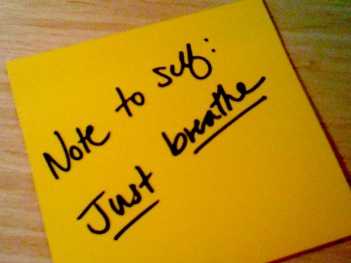So I recently completed a Personal Health Action Plan for our EHE317 class. The plan was about improving my own emotional and mental health as well as supporting that of my husband and children. As a university student and a married mom of 4, it is understandably challenging to find time to connect in meaningful ways. In addition, our current family dynamics have been impacted by 1) having lived apart from my husband for the past three years, 2) moving homes (and schools) three times in two years, 3) and an older daughter at university during this same timeframe. In June, 2015, we moved to Saskatchewan and, aside from Sarah who remained in Ontario at university, we are now living in a new home. However, living under the same roof doesn’t automatically mean feeling connected to one another. Therefore, this action plan was about healing our sense of “belonging”, as described in the Circle of Courage.
After 21 days, I asked my family how ‘connected’ I had been to each of them, before, during and after the plan. Although there were some surprises along the way, I am pleased with the results. I think I made some good progress in connecting with both my family members and myself. Consider my original intent:
- To create purposeful timeslots for activities to focus on myself, my husband and my family. I will be in the moment and not divide my attention.
I did create purposeful timeslots for these relationships. Some of the planned activities never or rarely happened. For example, the dog walking with my husband. The original reason (or excuse) was the cold weather, but other things ‘conveniently’ cropped up. However, the talking and time together with my husband that this was going to provide was fulfilled through lots of time spent indoors, talking and discussing options for remodeling our ‘new’ older motorhome.
Another comment about the timeslots came during feedback from my 14 year old. When I first created this plan, she had asked if I was going to plan time alone with each of the kids. My intention was that I wanted more family time – time spent together as a family. She didn’t seem too keen on the “family time”, but I shrugged this off, telling myself that, “everyone will enjoy family activities”. After the plan was over I asked her how my attentiveness and connectedness changed. She commented that during the Action Plan my attentiveness to her decreased – from “pretty good” prior, to “a little bit” during, and back up to “pretty good” afterwards. We had a long talk about this, and the fact that going into this action plan, she and I had a very strong connection with each other. However, during the Action Plan when I was working hard on family and spousal connectedness, she felt less connected to me. I appreciate my daughter’s thoughtfulness in answering the questions, and I think I overlooked this initially when considering the obstacles or challenges in this plan – what happens if there are strong bonds that will be adversely affected by my efforts to connect with others?
2. To be present in the moment when my family asks for my attention. If I am working on homework or otherwise occupied, I will give them my full attention wherever possible.
This wasn’t so much as structured time, as it was responsiveness. I think I did much better with this goal, as hard as it was. There were times when I knew I had assignments and readings to work on, but when my kids needed help, I gave them my full attention. When I did this, I found that the homework was completed quicker, we were able to make further extensions to their learning, and I enjoyed and appreciated the time we spent together more fully.
3. To “connect to myself”, I will also not take on ownership of resolving disputes if they arise between others. Learning to promote self-regulation, compromise and accountability in my children will improve my “connectedness to self”.
I can’t really tell you if I succeeded with this goal. My time to connect with self was definitely placed last on the list, getting demoted when anything else needed attention. However, as far as the ownership of resolving disputes, I think there were fewer disputes for me to get involved with. Perhaps being busy with my own work also eliminated me from the equation.
All in all, I am pleased with the progress I made. There are many things that I can continue to work on, but I feel that for a first action plan, I stepped up to meet the challenges that I established.
As Emma and I discussed today, now that our action plans are over, we feel the need to create a new action plan, with a new purpose! So, perhaps you have some ideas from action plans or goals you have set in the past… what has worked for you and what goals do you feel are meaningful?



 and interruptions that detract from “classroom learning”. There were the planned interruptions; a Grade 7-8 ski trip to Mission Ridge, a visit from the high school one day, followed by a tour AT the high school the next, the school-wide “Carnaval” Day, and of course the division PD Day and Teacher’s Conference. These things I knew about and planned for.
and interruptions that detract from “classroom learning”. There were the planned interruptions; a Grade 7-8 ski trip to Mission Ridge, a visit from the high school one day, followed by a tour AT the high school the next, the school-wide “Carnaval” Day, and of course the division PD Day and Teacher’s Conference. These things I knew about and planned for.